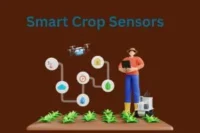Basics of Crop Rotation – Improve Soil Health and Boost Yields Naturally
Published: 13 May 2025
If you’ve ever wondered why your soil seems tired or why the same crops don’t thrive year after year, you’re not alone. I kept hearing about “crop rotation” but wasn’t exactly sure what it meant or how it worked. Was it something only large-scale farmers used? Did I need special tools? As it turns out, crop rotation is one of the simplest and most natural ways to restore soil health and improve harvests—even for small gardens. Here’s what I’ve learned.
So, guys, without wasting time, let’s jump into the article to learn the Basics of Crop Rotation – Improve Soil Health and Boost Yields Naturally
What Is Crop Rotation?
Crop rotation is the agricultural practice of growing different types of crops in a planned sequence on the same piece of land over different seasons or years. This method helps manage soil nutrients and disrupts pest and disease cycles by avoiding continuous planting of the same crop type in one location.
- It is a foundational technique in sustainable and regenerative farming.
- Crop rotation is the planned sequencing of different crops on the same land over time.
- Each crop in the rotation uses or restores different soil nutrients.
- The practice prevents the buildup of pests and diseases associated with monoculture.
The practice prevents the buildup of pests and diseases associated with monoculture.
- Crop rotation is the practice of growing different types of crops in the same location over different seasons or years.
- It helps break pest and disease cycles, improves soil structure, and balances nutrient use.
Why Crop Rotation Matters
The Role in Sustainable Agriculture
- Prevents soil exhaustion caused by continuous monocropping.
- Reduces the need for synthetic fertilizers and pesticides.
- Encourages microbial and insect biodiversity in soil.
How Crop Rotation Works
Core Principles and Examples
- Rotate crops based on their nutrient demands and root depth.
- A typical cycle includes legumes, leafy crops, root vegetables, and fruiting crops.
- Sample rotation:
- Year 1: Legumes (beans, peas) – fix nitrogen
- Year 2: Leafy vegetables (spinach, cabbage) – use nitrogen
- Year 3: Root crops (carrots, beets) – break up soil
- Year 4: Fruiting plants (tomatoes, peppers) – balanced feeders
Common Crop Rotation Plans
Practical Models to Start With
- Two-Year Plan: Corn → Legumes
- Three-Year Plan: Leafy → Root → Fruit
- Four-Year Plan: Legume → Leafy → Root → Fruit
- Tailor your plan to space, climate, and crop goals.
Benefits of Crop Rotation
Why It’s More Effective Than Monoculture
- Boosts soil fertility naturally
- Minimizes pest and disease recurrence
- Balances nutrient usage and pH
- Controls weeds without chemicals
- Increases yield stability over time
Crops to Include in a Rotation
Groupings and Nutrient Roles
- Legumes (beans, peas): Add nitrogen to soil
- Grains (wheat, corn): Moderate feeders
- Root vegetables (carrots, radishes): Loosen compact soil
- Leafy greens (lettuce, spinach): Shallow, fast-growing feeders
- Choose crops that complement each other over time.
Mistakes to Avoid in Crop Rotation
Preventing Common Setbacks
- Avoid planting the same crop family two years in a row
- Don’t overlook soil testing and nutrient needs
- Keep written records to track rotations
- Don’t overcomplicate—start with simple systems
Crop Rotation for Home Gardens
Scaling the Practice to a Small Space
- Divide your garden into 3–4 sections or raised beds
- Rotate families (e.g., brassicas, legumes, solanaceae) annually
- Use containers or vertical beds if limited on space
- Maintain a planting journal for better results
Digital Tools and Resources
Make Planning Easier
- Use garden planner apps and online tools to manage rotation
- Printable rotation charts for easy tracking
- Recommended tools: Plan-A-Garden, GrowVeg, AgriApp

Final Thoughts
Conclusion and Encouragement
- Crop rotation is a time-proven strategy to enhance both productivity and sustainability.
- It protects soil health, supports long-term yields, and reduces farming input costs.
- Start small, stay consistent, and watch your soil and crops thrive season after season.
References
Crop rotation is a time-tested agricultural method proven to enhance soil fertility and reduce pest pressure (FAO, 2017).
Author Name.
A Tanveer,
Crop Rotation, Principle and practices

- Be Respectful
- Stay Relevant
- Stay Positive
- True Feedback
- Encourage Discussion
- Avoid Spamming
- No Fake News
- Don't Copy-Paste
- No Personal Attacks

- Be Respectful
- Stay Relevant
- Stay Positive
- True Feedback
- Encourage Discussion
- Avoid Spamming
- No Fake News
- Don't Copy-Paste
- No Personal Attacks





